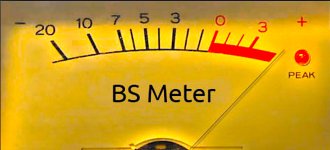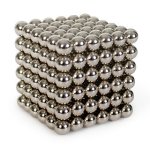-
Welcome to BirdForum, the internet's largest birding community with thousands of members from all over the world. The forums are dedicated to wild birds, birding, binoculars and equipment and all that goes with it.
Please register for an account to take part in the discussions in the forum, post your pictures in the gallery and more.
You are using an out of date browser. It may not display this or other websites correctly.
You should upgrade or use an alternative browser.
You should upgrade or use an alternative browser.
How much variation is there in the production line. (3 Viewers)
- Thread starter Paultricounty
- Start date
More options
Who Replied?but back to the topic I think the OP was asking about - sample variation - here's a gem from our resident expert (bold text added by me) ...
...This puts not only a comparison of two binoculars of similar design and performance on the border of impractical and foolish (stacking BBs), it makes the comparison of two binoculars of the same model—produced on the same day—impractical and foolish as well, at least to the level so many on these forums want it to be. I’m sorry but reality bites...
Source of that quote?but back to the topic I think the OP was asking about - sample variation - here's a gem from our resident expert (bold text added by me) ...
I don’t see it in this thread.
Philosophically,In order to evaluate anything, you need to design a test which eliminates (or minimizes) variables other than the one you want to study.
Anything else is madness, and yields useless results.
Maybe, sorta. Taken to its extreme, thinking about something like a binocular, there comes a point when removing seeming apparent non relevant variables, you may not have anything left to evaluate. Thinking about the various conversations we've had, and especially the work of Holger Merlitz, we have learned that some stuff varies with choices optical engineers make. Pleasing all the people all the time, doesnt work given the human variables that cant be eliminated.
Minimizes? OK.
Am reminded of that often described "process" of psychotherapy, where one peels back the layers of the onion to get to the essence of a person. Anybody ever peeled the layers of an onion? There is no core, seed, pit. There's nothing there. Yikes!
Last edited:
It was Chuck... Now where?Source of that quote?
I don’t see it in this thread.
Nor do I.I don't think "stacking BBs" was ever a term used by Chuck?
Ive stayed out of this thread. The subject is rather too big and complex for the sort of reasonably brief discssusions preferred here. I get challenged from time to time for my wordy posts, so have hung back... But let me try.
I spent 3 years in the early '80s as Quality Manager on the staff of the VP of manufacturing, for a company that made stuff complimentary to the businesses we discuss here. That business was arguably as technically complex, if in a different way, and perhaps more diverse than binos, scopes etc. In those days I was one of many US Quality Mgt execs schlepping to Japan and asking them what, how they were doing what they were doing. I sat in one meeting with the heads of a rather large industrial conglomerate where they said they were surprised I/we were coming to Japan and asking these questions as we had taught them! Indeed it was Edwards Deming, Joe Juran, Frank Gryna who had been consultants to post WWII Japan and helped rebuild their industrial base. Back then they were back in the US teaching, writing, lecturing, Their work, then called Total Quality Management, was standing on the shoulders of Statistical Process Control, that formed the basis for Just in Time or the Toyota system of manufacturing. I heard some of their lectures, read their work, hired a super qualified consultant to guide my uninformed, amateur effort. Thankfully I had an amazingly tolerant boss.
Relevant to this discussion, I thought when posted it would go down the road of how things get made, how quality is controlled, the role of sampling, statistics, the stuff that ensures the quality level of products to be shipped. I was surprised but in hindsight should not have been, when it took the tack down this road of piece to piece, optical quality variation.
In theory, as Henry describes, there is a perfect or near perfect example of a thing, and a way to ensure whether one has acquired that or not (star testing, etc). And as he wrote folks with 2020, 2015 or better eyesight can appreciate such things. The problem for a manufacturer, is where to draw the line, how good is good enough? How to practically establish standards that can be measured in a meaningful, efficient way as a compliment to the production process.
I suspect many know of that old notion, "The perfect is the enemy of the good." To produce an item that satisfies as many people as possible at a price they're willing to pay that provides an acceptable return to the owners, requires compromise. I suspect its fair to argue the better companies, know this well. The success of their products and their continuing existence suggests they take pretty good care of most of us most of the time...
I agree it takes a lab, with sophisticated test equipment, and super careful controlled procedures to find the best of a thing. Knowing that level of performance informs all kinds of useful things. I also agree there are applications where that degree of perfection is warranted in use. Those that have asked above, "if we can't see it, especially if using my binos the way I do, should I care?" are onto the dilemma faced by the makers.
I spent 3 years in the early '80s as Quality Manager on the staff of the VP of manufacturing, for a company that made stuff complimentary to the businesses we discuss here. That business was arguably as technically complex, if in a different way, and perhaps more diverse than binos, scopes etc. In those days I was one of many US Quality Mgt execs schlepping to Japan and asking them what, how they were doing what they were doing. I sat in one meeting with the heads of a rather large industrial conglomerate where they said they were surprised I/we were coming to Japan and asking these questions as we had taught them! Indeed it was Edwards Deming, Joe Juran, Frank Gryna who had been consultants to post WWII Japan and helped rebuild their industrial base. Back then they were back in the US teaching, writing, lecturing, Their work, then called Total Quality Management, was standing on the shoulders of Statistical Process Control, that formed the basis for Just in Time or the Toyota system of manufacturing. I heard some of their lectures, read their work, hired a super qualified consultant to guide my uninformed, amateur effort. Thankfully I had an amazingly tolerant boss.
Relevant to this discussion, I thought when posted it would go down the road of how things get made, how quality is controlled, the role of sampling, statistics, the stuff that ensures the quality level of products to be shipped. I was surprised but in hindsight should not have been, when it took the tack down this road of piece to piece, optical quality variation.
In theory, as Henry describes, there is a perfect or near perfect example of a thing, and a way to ensure whether one has acquired that or not (star testing, etc). And as he wrote folks with 2020, 2015 or better eyesight can appreciate such things. The problem for a manufacturer, is where to draw the line, how good is good enough? How to practically establish standards that can be measured in a meaningful, efficient way as a compliment to the production process.
I suspect many know of that old notion, "The perfect is the enemy of the good." To produce an item that satisfies as many people as possible at a price they're willing to pay that provides an acceptable return to the owners, requires compromise. I suspect its fair to argue the better companies, know this well. The success of their products and their continuing existence suggests they take pretty good care of most of us most of the time...
I agree it takes a lab, with sophisticated test equipment, and super careful controlled procedures to find the best of a thing. Knowing that level of performance informs all kinds of useful things. I also agree there are applications where that degree of perfection is warranted in use. Those that have asked above, "if we can't see it, especially if using my binos the way I do, should I care?" are onto the dilemma faced by the makers.
Last edited:
I don't think "stacking BBs" was ever a term used by Chuck?
Ill keep looking. Patudo you cited it, where'd you see it? That might help trigger...Nor do I.
I was wrong. Found what I was thinking about from Chuck it was #108 from,
Reading about binoculars and optics is very useful and like going to school it gives you something to work with. Facts however are a combination of study and hands-on experience.
"Twilight factor" is real.
Think tho its kinda relevant here...
8x42 vs. 10x50 dawn/twilight,
"So when "comparing" different objective sizes one needs to keep as many things constant as possible. For instance...use a binocular that is offered with different objective sizes such as Zeiss FL(32-56mm), Swarovski SLC(42-56mm), Leica UV(32-50mm) and Meopta Meostar B.1(32-56mm). So get you two or three of the same model, close to the same time of production, keeping the same magnification, and change only the objective size. Take all of them with you out in the field with a note book and document the time and what you see and don't see at fixed distances. Do it some starting before sunup and well after twilight. Several times.Reading about binoculars and optics is very useful and like going to school it gives you something to work with. Facts however are a combination of study and hands-on experience.
"Twilight factor" is real.
Think tho its kinda relevant here...
Pretty sure that's a Bill Cook quote.Ill keep looking. Patudo you cited it, where'd you see it? That might help trigger...
John A Roberts
Well-known member

tenex
reality-based
As did I, being of course unable to compare the BN before and after service, merely trying it on my reference target. I was surprised myself that its central sharpness could be improved enough to notice without more careful testing (and I don't have especially acute vision). It's now about as sharp as my other bins. So variation like this is good to be aware of.Yes I read that too, I think that was Dalat. The interesting thing there is that he noticed it without side by side comparison.
That is of course Bill Cook, in this post (edit: similar to many others just referenced by John): Nikon SE vs Everything.I don't think "stacking BBs" was ever a term used by Chuck?
Thanks John, Guess what I tried the drop down top right to.... what the old saw? "garbage in, garbage out" (mine)Hi Tom, and others, re post #29,
Here's several (and there's more):
View attachment 1526669
From a quick search (using the drop down on the top right of the screen).
John
Paultricounty
Well-known member

Don’t get me wrong , I enjoy Bills posts, respect his incredible knowledge, have his books and have binoculars he had suggested. But is it me , or does he seem angry and defensive even before anybody responds to one of his posts . 🙏🏼✌🏼Hi Tom, and others, re post #29,
Here's several (and there's more):
View attachment 1526669
From a quick search (using the drop down on the top right of the screen).
John
Paul
dries1
Member
It appears that the SFL has some noticeable production variation regarding comments from owners. This is likely from being a new glass, I remember the NLs with some of their focus issues when they rolled out. What perplexes me is that Zeiss would replace the SFL in some instances/ where they would service the FLs for example. I have never seen this with a glass costing more than $1,500, but then again a potential new game of replacement with higher price tags.
One of my favorites acquired from from Bill Cook.

One of my favorites acquired from from Bill Cook.

normjackson
Well-known member
Hopefully that's not an unwitting self-portrait.
Users who are viewing this thread
Total: 4 (members: 0, guests: 4)






